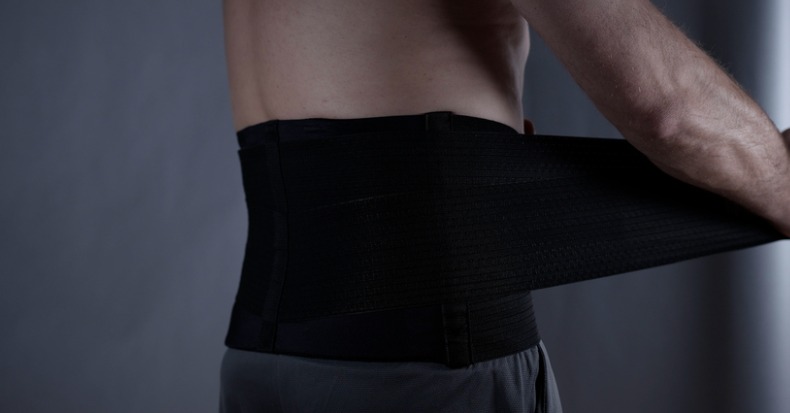“Do you think a back brace will help my condition?” This is a question that is frequently asked of many healthcare providers who treat low back pain. The answers typically vary, as there is support for and against the use of a brace when low back pain is present. In a February 2009 study, researchers followed a group of subacute low back pain patients who utilized elastic lumbar belts to observe their effect on functional capacity (lift and carry types of activities), pain intensity, and healthcare service utilization/costs. This study was unique in that it was carried out in several different locations and the patients were randomized and received either a lumbar belt or nothing (“control group”). Nearly 200 patients were included in the study, which is a good sample size for research purposes. After 90 days, the results revealed better pain scores for the back brace-treated group than the non-braced control group (42 points vs. 32 points). Similarly, 61% in the brace-treated group used no medication compared with 40% in the non-braced group. The researchers concluded that patients with subacute low back pain improved significantly in functional status, pain reduction, and medication utilization when utilizing an elastic lumbar belt.
The use of back braces has been considered a “standard” in the treatment of patients with LBP for many years. One argument against using back braces centers around patients becoming “dependent”—either physically or mentally—on their use and this has long been a concern among healthcare providers. For most patients, this is not a concern as most do not “enjoy” wearing a brace and they look forward to not using them any longer. Braces are particularly helpful when the patient cannot stop performing needed activities, such as work-related tasks. This is especially true for farmers who have to tend to the animals and crops during the planting, cultivating, and harvest times of the year. In addition, single moms or dads who have to go to work in order to provide for their children are driven to stay on the job. In these cases, the use of a back brace can be of utmost importance.
There are many types of back braces. Some are narrow and are particularly favored when frequent bending and/or twisting movements are required by a job, sport, or other daily activity. Other braces are taller in the back and taper in the front, which give better support but still allow some bending / twisting movements. Some braces are more rigid and can actually stop movement in certain directions. These types include a hard, rigid surface that is placed in the area of the back where movement is not desired. These are used at times when there are fractures of the spine, after spinal surgery, and when a patient has scoliosis. Some braces are to be worn low on the pelvis to support that area, while most are placed in the center of the low back region. There are also rib belts, sometimes used when ribs fracturel soft and rigid neck braces, sometimes used after car accidents; and braces for the arms or legs. The decision to use a brace rests on the degree of injury and the patient’s ability to avoid certain activities or positions. When the injury is significant and/or the patient cannot control his/her activities (such as work), then the use of a brace may be one of the most important treatment approaches for that patient. It’s similar to having stitches when a deep or wide cut occurs.
